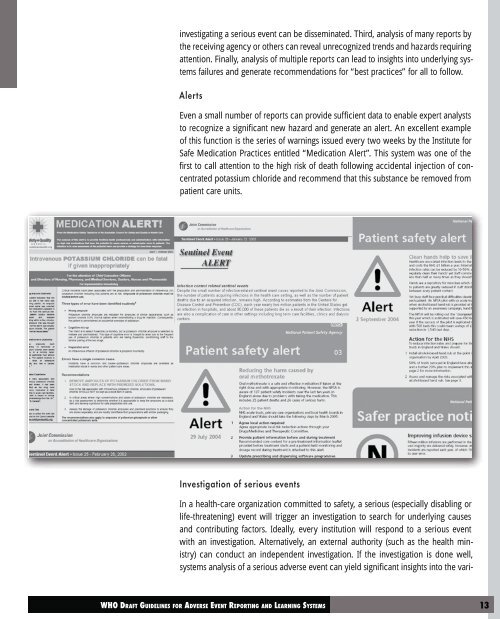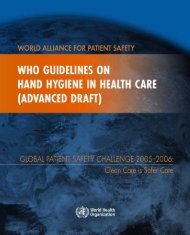Adverse event reporting.pdf
Adverse event reporting.pdf
Adverse event reporting.pdf
You also want an ePaper? Increase the reach of your titles
YUMPU automatically turns print PDFs into web optimized ePapers that Google loves.
investigating a serious <strong>event</strong> can be disseminated. Third, analysis of many reports by<br />
the receiving agency or others can reveal unrecognized trends and hazards requiring<br />
attention. Finally, analysis of multiple reports can lead to insights into underlying systems<br />
failures and generate recommendations for “best practices” for all to follow.<br />
Alerts<br />
Even a small number of reports can provide sufficient data to enable expert analysts<br />
to recognize a significant new hazard and generate an alert. An excellent example<br />
of this function is the series of warnings issued every two weeks by the Institute for<br />
Safe Medication Practices entitled “Medication Alert”. This system was one of the<br />
first to call attention to the high risk of death following accidental injection of concentrated<br />
potassium chloride and recommend that this substance be removed from<br />
patient care units.<br />
Investigation of serious <strong>event</strong>s<br />
In a health-care organization committed to safety, a serious (especially disabling or<br />
life-threatening) <strong>event</strong> will trigger an investigation to search for underlying causes<br />
and contributing factors. Ideally, every institution will respond to a serious <strong>event</strong><br />
with an investigation. Alternatively, an external authority (such as the health ministry)<br />
can conduct an independent investigation. If the investigation is done well,<br />
systems analysis of a serious adverse <strong>event</strong> can yield significant insights into the vari-
















